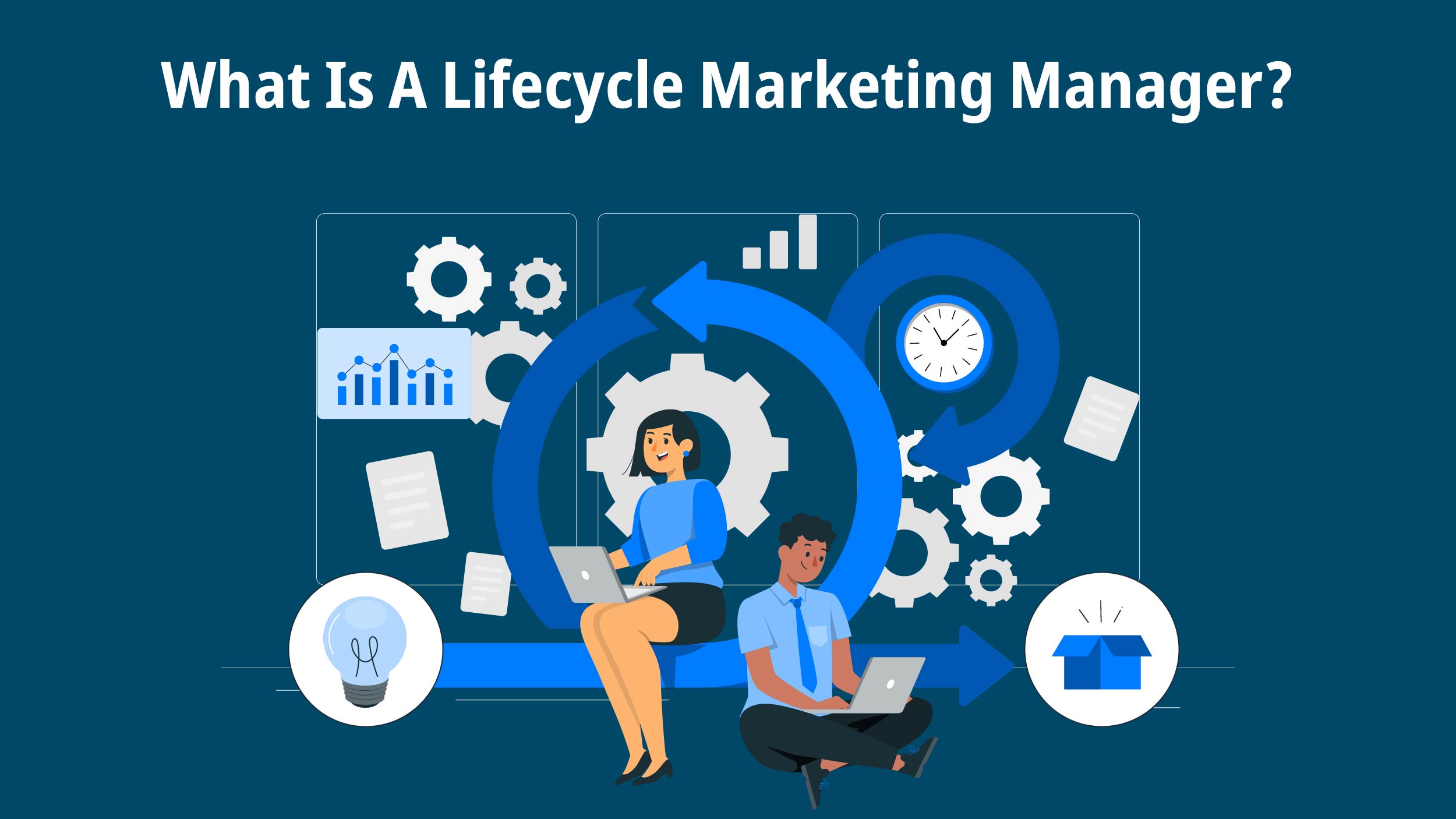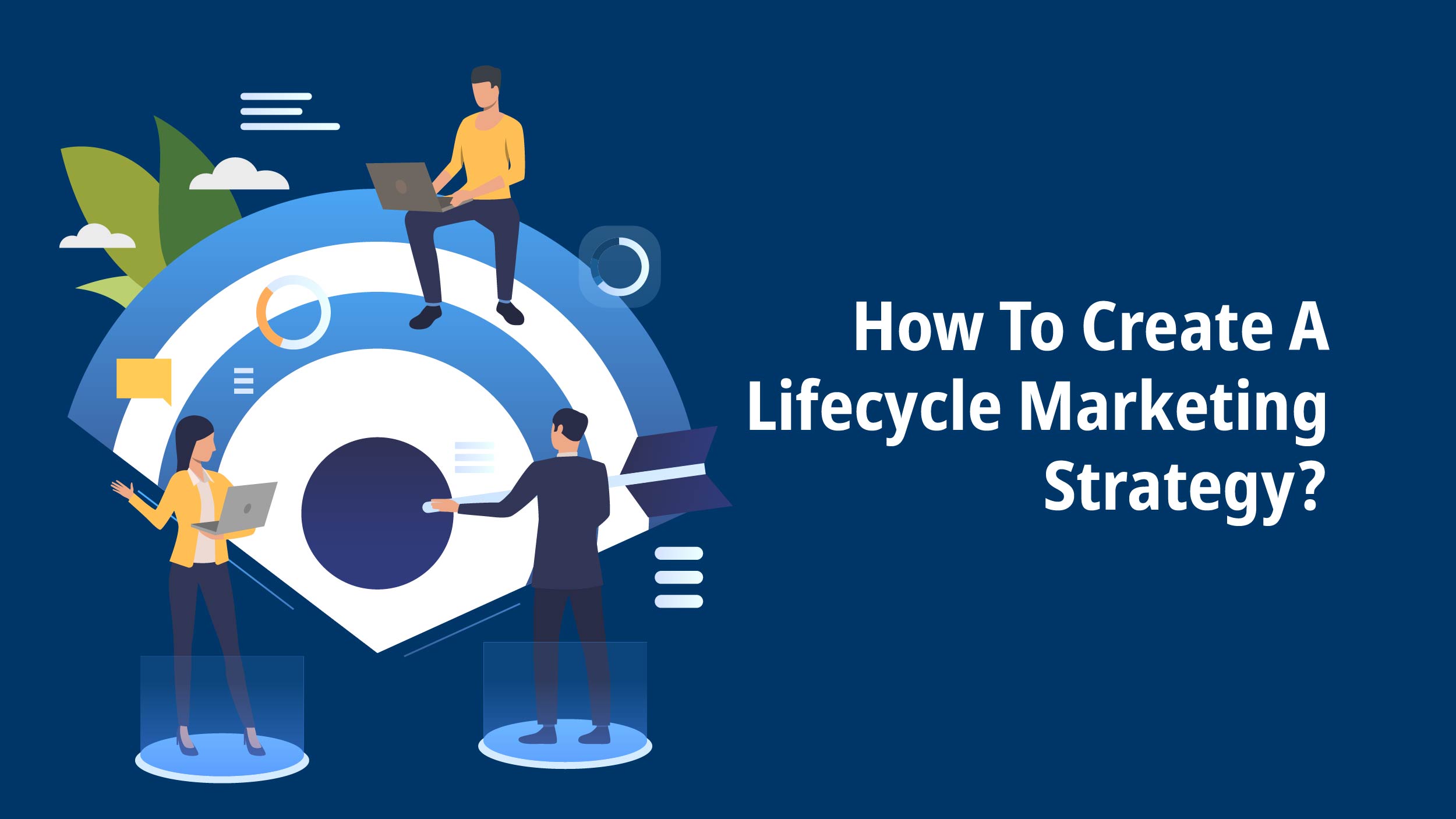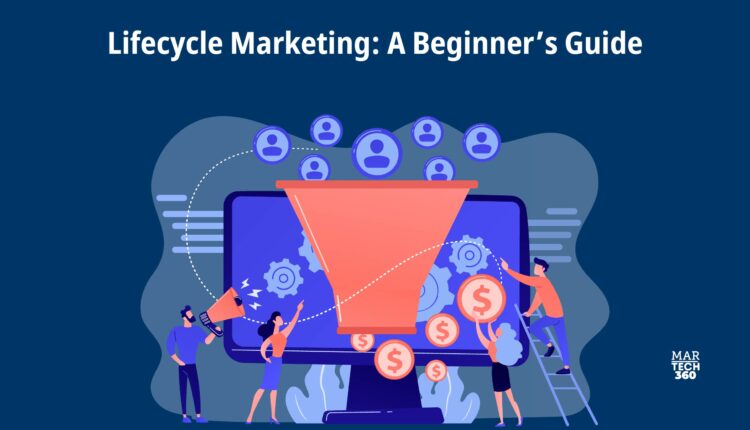If you are a marketer, you know you can’t win over your customers within the first meeting. It often takes more than just a couple of interactions, maybe even more than three calls, to seal the deal. This is what makes lifecycle marketing crucial.
By focusing on the entire lifespan of a customer’s interaction with your brand, this approach aims to maximize customer value and loyalty. It’s like giving your building a complete overhaul, ensuring that every stage of your customer’s journey is carefully nurtured and optimized for success.
But what does that mean for your business? Let’s dive in.
What Is Lifecycle Marketing?
Lifecycle marketing is the process of strategically guiding potential customers through various stages of their journey with your brand.
Lifecycle marketing aims to customize communication based on where the customer stands in their journey and address their specific needs to propel them forward. This approach recognizes that each stage of the customer lifecycle demands tailored messaging to sustain their interest and involvement.
What Is A Lifecycle Marketing Manager?
 A lifecycle marketing manager is responsible for crafting the path that customers take with a brand. They set important milestones along this journey, tackle any challenges that arise, and run initiatives aimed at keeping customers deeply engaged. All of this is done to boost:
A lifecycle marketing manager is responsible for crafting the path that customers take with a brand. They set important milestones along this journey, tackle any challenges that arise, and run initiatives aimed at keeping customers deeply engaged. All of this is done to boost:
- revenue
- customer loyalty
Is Lifecycle Marketing the Same as CRM?
Lifecycle marketing and customer relationship management (CRM) revolve around customer interactions; they serve distinct purposes. Lifecycle marketing refers to the entirety of the customer journey, spanning from initial contact to post-purchase engagement.
Its goal is to guide potential customers through various stages and deliver tailored messages based on their evolving needs.
Conversely, CRM primarily deals with managing interactions with prospects, leads, and customers. This often involves employing a system to gather and organize customer data, facilitate communication, and automate certain processes.
In summary, CRM functions as a tool for handling customer interactions, whereas lifecycle marketing is a strategic approach to nurturing and engaging customers at every phase of their relationship with a brand.
Also Read: Content Collaboration: What Is It And Why Is It Important?
6 Different Stages Of Lifecycle Marketing
The six important marketing lifecycle stages are listed below.
- Awareness
- Engagement
- Evaluation
- Purchase
- Support
- Loyalty
- Awareness: This marks the initial encounter potential customers have with your brand. Positioned at the top of the conversion funnel, it presents a prime opportunity to grab attention and draw individuals deeper into your marketing funnel. Econsultancy discovered that 93% of companies saw higher conversion rates when they personalized their search engine marketing.
- Engagement: As individuals start interacting with your brand, they enter the engagement phase. They demonstrate interest and seek to understand more about your offerings, whether through subscribing to your email list, engaging on social media, or exploring your website. Indeed, a staggering 79% of customers reaching out to a company anticipate consistent engagement.
- Evaluation: The evaluation stage is where decisions are made. It’s crucial to facilitate easy decision-making by providing comprehensive information to help prospects compare features, pricing, and overall value.
- Purchase: Congratulations! Those who progress to this stage become customers. Here, the focus shifts to ensuring a seamless purchasing experience, making it effortless for customers to complete their transactions.
- Support: Experience shows that customers may drop off after their initial purchase. Therefore, it’s vital to address their post-purchase needs. In the support stage, the aim is to follow up with customers and ensure their satisfaction with their purchase.
- Loyalty: Customers enter the loyalty stage when they become enthusiastic advocates for your brand. Nurturing this advocacy is key to retaining their business and attracting new customers through word-of-mouth referrals. When customers trust a brand, they’re 95% more likely to stay loyal.
How To Create A Lifecycle Marketing Strategy?
 Crafting a successful marketing strategy hinges on comprehending the customer journey and tailoring marketing efforts to each stage.
Crafting a successful marketing strategy hinges on comprehending the customer journey and tailoring marketing efforts to each stage.
Simply put,
- Enhance your customer base by enhancing the purchasing experience.
- Boost sales by fostering repeat business from initial buyers.
- Cultivate brand advocates who enthusiastically endorse your brand, enhancing marketing ROI and lifetime customer value.
All this entails connecting with customers at multiple touchpoints, nurturing them from initial awareness to becoming loyal advocates. Your strategy should span from attracting attention in the awareness phase to fostering advocacy, covering the entirety of the customer lifecycle.
Integrating lifecycle marketing into your approach allows you to forge enduring connections with customers, influence their behavior, and ultimately boost revenue. Moreover, effective utilization of email marketing is paramount in this endeavor. Leveraging the principles of the customer lifecycle enables you to craft personalized experiences and engage customers throughout various stages of their journey. Additionally, automation tools can be invaluable in scaling efforts and fine-tuning the marketing lifecycle strategy for optimal results.
5 Best Lifecycle Marketing Practices
Given below are the five best practices of the marketing lifecycle:
- Automate lifecycle stages: Streamline processes like onboarding, upselling, and purchasing through email workflows and chatbots, allowing for more efficient customer support and engagement.
- Utilize CRM systems: Add clients to your CRM system to better understand their needs and preferences, enabling the creation of highly targeted offers and increasing revenue. Consider platforms like SendPulse CRM for comprehensive sales automation and customer communication.
- Personalized communication: Deliver personalized experiences through tailored emails, SMS, and segmented chatbot interactions, enhancing customer satisfaction and engagement.
- Identify churn risks: Identify weak points in the customer journey, such as registration difficulties or unexpected costs, and promptly address them to prevent customer churn.
- Implement segmentation: Segment clients based on key milestones like abandoned carts or purchase frequency to effectively celebrate achievements and strengthen relationships throughout the customer lifecycle.
Final Takeaway
To elevate personalized marketing, focus on customer lifecycle marketing stages. By doing so, you address genuine customer needs and desires. Begin by mapping out your ideal customer profile and buyer’s journey, then strategize to promptly meet the needs of both customers and prospects.


Comments are closed.